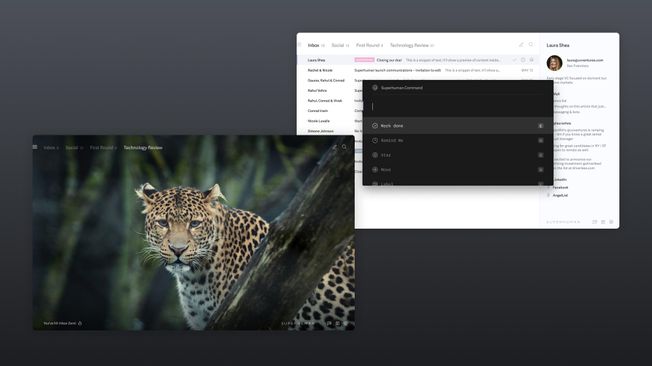
Last week, a friend who runs a 50-person company showed us how their team handles customer support emails. It took three full-time people just to sort incoming messages and route them to the right departments. The whole time we kept thinking, "A decent AI agent could do this job while they sleep."
That's what AI agentic workflows are about — getting computers to handle complex work that used to need humans. Unlike regular automation that just follows the same steps over and over, these systems make decisions, learn from mistakes, and adapt to new situations.
This matters because most companies waste an obscene amount of time on work that's important but boring. Let's talk about how these systems actually work, what they're good for, and how companies are using them today.
What makes an AI workflow "agentic"?
An agentic workflow is just a fancy way of saying "a computer system that can make decisions and take actions without asking you about every little thing."
What makes it different from regular automation? Normal automation is like those old-school sprinklers that water your lawn on a timer even when it's raining. Agentic workflows are more like modern sprinklers that check the weather forecast, monitor soil moisture, and decide when watering actually makes sense.
While autonomous AI systems handle tasks without supervision in changing environments, generative AI just creates content based on patterns it's seen before. This matters because agentic workflows need to both make decisions AND adapt to new situations.
For most of us drowning in emails, meetings, and reports, these systems offer a way out. They take over the routine decisions that eat up our day, so we can focus on work that actually requires human judgment.
The building blocks of AI agentic workflows
Task decomposition
Have you ever tried explaining a complicated job to a new employee? It's overwhelming unless you break it down into smaller steps.
AI works the same way. AI agents analyze complex tasks by breaking them down into smaller subtasks, figuring out how those pieces relate, and tackling them in the right order.
Take email processing. Instead of one giant "handle all emails" task, the system:
- Sorts messages by type (question, complaint, sales lead, etc.)
- Identifies what needs to be done for each one
- Drafts appropriate responses
- Schedules follow-ups when needed
Each step is manageable on its own, and different specialized tools can handle different parts.
Decision-making processes
The brain of any agentic workflow is how it makes decisions.
The system gathers relevant information, runs it through algorithms to evaluate options, and picks the best action based on your goals and rules. What separates basic automation from something truly agentic is how it balances acting independently while still staying aligned with what you want.
Good systems also create feedback loops so they learn from what works and what doesn't. Each decision helps them get smarter for next time.
Interaction with human operators
Even the best AI needs human input sometimes.
Smart agentic workflows know when to ask for help, clarify confusing situations, or present options when they're not sure. They're designed for collaboration:
- Humans provide judgment on unusual cases and ethical questions
- AI handles the repetitive execution and routine decisions
Over time, these interactions help the system learn your preferences better, so it needs to ask for help less often.
Integration with existing systems
No workflow exists in isolation. The real magic happens when your AI can talk to all your other tools.
These systems need to connect with your databases, communication channels, enterprise software, and other business systems. That's why clear data exchange between systems matters so much - your AI needs standardized ways to get information and take actions across different parts of your organization.
Task completion and follow-ups
What happens after a task is done? This is where many traditional automation systems fall short.
Good agentic workflows track what happened, document results, and trigger appropriate next steps. They might escalate problems that need human attention, schedule related tasks, or update other systems with new information.
The system remembers how it handled similar situations in the past, which helps it get better at dealing with them in the future.
The tech that makes agentic workflows possible
AI agents and subagents
Most effective agentic workflows don't use one massive AI system. They use teams of specialized agents, each focused on specific tasks.
Just like skilled employees, AI agents work better when they specialize. A healthcare workflow might use one agent to analyze medical data while another manages appointment scheduling.
This specialization creates:
- Better performance on specific tasks
- More resilience (if one agent fails, the whole system doesn't crash)
- Flexibility to reconfigure as needs change
The system coordinates these specialized agents so they work together effectively, sharing information and collaborating on complex tasks.
Robotic process automation (RPA)
If AI agents are the brains, RPA systems are the hands.
These tools handle the repetitive, rule-based tasks like data entry, form filling, and basic digital processes. When you combine RPA with AI, you get systems that can handle increasingly complex workflows that used to require human judgment.
This pairing makes traditional automation smarter and more flexible. Tasks that once needed constant human supervision can now run on their own with surprising accuracy.
Natural language processing (NLP)
NLP is what lets AI understand and generate human language. This makes agentic workflows accessible to normal people, not just technical experts.
These systems process emails, documents, conversations, and other unstructured text to extract relevant information and generate appropriate responses.
This changes how people interact with automation. Instead of learning specialized commands or interfaces, you can just tell the system what you need in ordinary language.
Computer vision and sensors
For workflows that need to interact with the physical world, vision and sensing capabilities are essential.
Computer vision and sensor technologies let AI systems understand what they're seeing, gather real-time data, and maintain awareness of their surroundings.
This extends agentic workflows beyond purely digital processes into areas like manufacturing, logistics, healthcare, and any domain with physical components.
Cloud computing and infrastructure
Behind every sophisticated AI system is serious computing power.
The computational demands of agentic workflows require robust infrastructure. Cloud computing provides the processing power, storage, and scalability these systems need.
Distributed processing capabilities let them handle complex tasks efficiently, while dynamic resource allocation ensures they perform well even when workloads vary.
Why companies are implementing AI agentic workflows
Enhanced efficiency and productivity
The numbers don't lie.
Agentic workflows automate complex processes end-to-end, reducing manual work and speeding up task completion. Worker productivity increases by 66% when using AI tools, equivalent to cramming 47 years of productivity improvements into a single year.
For teams facing growing workloads with limited resources, this productivity boost is a game-changer. People can focus on creative and strategic work instead of routine tasks.
24/7 continuous operation
When was the last time your email inbox took a weekend off?
Unlike human workers, AI systems don't need breaks or sleep. AI agentic workflows enable critical business operations to run around the clock, helping companies expand across different time zones while maintaining consistency.
This eliminates work backlogs during off-hours and ensures productivity across global teams. Customer messages get prompt attention regardless of when they arrive, and time-sensitive processes keep running without interruption.
Improved adaptability
Traditional automation breaks when conditions change. Agentic workflows adapt.
These systems adjust in real-time to new circumstances, learning from experience and continuously improving their processes. This makes them resilient to change and increasingly effective over time. Rather than degrading with use, they actually get better as they accumulate knowledge.
Reduced errors and improved quality
Humans make mistakes. Computers make different mistakes, but typically fewer of them.
Consistent execution is what makes agentic workflows valuable. AI workflow automation eliminates repetitive tasks, frees up human brainpower, reduces errors, and accelerates work by running processes 24/7 without getting tired.
Pattern recognition capabilities also help these systems spot anomalies and potential issues before they become serious problems. This proactive approach prevents costly mistakes and ensures consistent results.
Faster decision-making and communication
In today's business environment, speed often beats perfection.
Teams using AI email tools respond 12 hours faster on average, significantly improving workflow and decision speed. Agentic workflows reduce bottlenecks in information sharing and streamline approval processes that might otherwise delay action.
This acceleration helps companies capitalize on time-sensitive opportunities and respond quickly to emerging challenges before competitors can react.
Try SuperhumanHow to actually implement these systems
Workflow design and planning
Success starts with picking the right processes to automate and setting clear goals.
For AI agents to deliver results, they need specific directions like "reduce response time from 10 minutes to 2 minutes" rather than vague goals like "improve efficiency."
Creating effective agent systems requires balancing complexity with reliability. Companies should:
- Start with well-defined processes that offer clear value when automated
- Set specific success metrics to measure improvement
- Build in appropriate oversight mechanisms
- Expand to more complex workflows as they gain experience
Integration strategies
An agentic workflow is only as good as its connections to your existing systems.
Connecting these workflows with enterprise systems requires planning for data flow and information exchange. API requirements and connectivity considerations should be addressed early in the implementation process.
Companies should map all the systems that will interact with the agentic workflow to identify potential integration challenges and develop solutions before deployment.
Governance and oversight
"Trust but verify" applies perfectly to AI systems.
While agentic workflows operate autonomously, proper human supervision remains essential. Organizations need clear boundaries for autonomous actions and monitoring frameworks to ensure alignment with company goals and ethical standards.
Regular evaluation helps refine these systems and ensures they continue to deliver value as business needs change.
A real example that actually worked
Theory is nice, but results matter more. Here's a real case study.
Online retailer Papier used AI agents to identify common customer problems and build conversation flows that handle routine inquiries, freeing human agents to focus on complex issues.
This allowed Papier to expand from the UK to the US while maintaining consistent customer support. By analyzing common inquiries and building intelligent workflows to address them, they created a scalable support system that delivers responsive service regardless of volume or time zone.
For growing businesses facing similar scaling challenges, this shows how agentic workflows can enable expansion without proportional increases in staff or complexity.
What this means for the future of work
AI agentic workflows represent the next frontier in productivity. As these technologies mature, they'll increasingly handle complex knowledge work that previously required human judgment, freeing people to focus on creative and strategic thinking.
Companies that embrace this shift will gain significant advantages in operational efficiency, customer responsiveness, and market agility. The future belongs to teams that use intelligent automation not just as a cost-saving measure, but as a strategic asset that transforms how work gets done.
For teams looking to maintain their competitive edge, AI agentic workflows offer a path to exceptional productivity in an increasingly complex business landscape.





